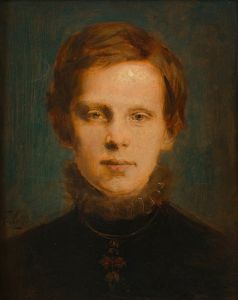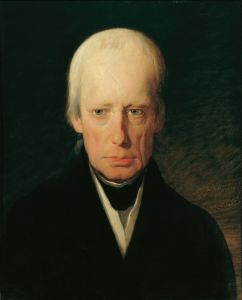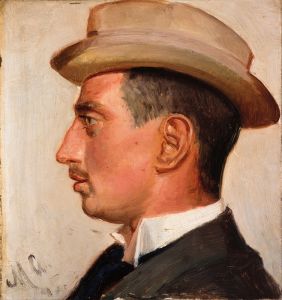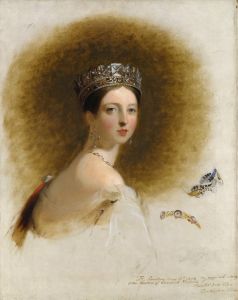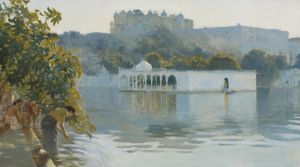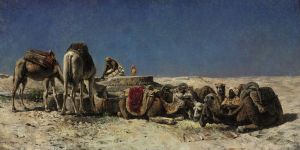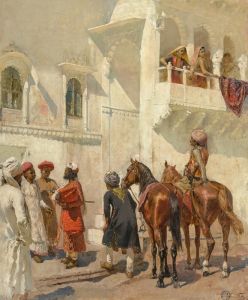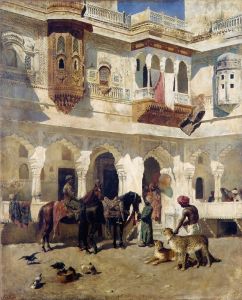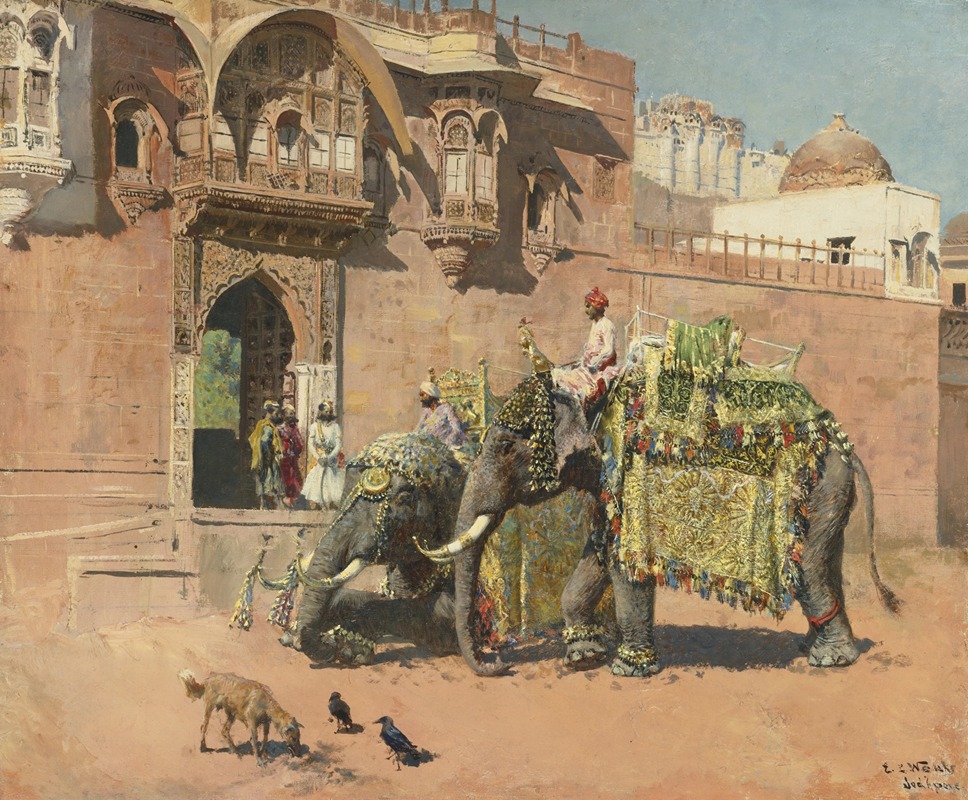
Les éléphants du Rajah de Jodhpore
A hand-painted replica of Edwin Lord Weeks’s masterpiece Les éléphants du Rajah de Jodhpore, meticulously crafted by professional artists to capture the true essence of the original. Each piece is created with museum-quality canvas and rare mineral pigments, carefully painted by experienced artists with delicate brushstrokes and rich, layered colors to perfectly recreate the texture of the original artwork. Unlike machine-printed reproductions, this hand-painted version brings the painting to life, infused with the artist’s emotions and skill in every stroke. Whether for personal collection or home decoration, it instantly elevates the artistic atmosphere of any space.
Edwin Lord Weeks was an American artist known for his Orientalist paintings, which often depicted scenes from his travels in the Middle East, North Africa, and South Asia. One of his notable works is "Les éléphants du Rajah de Jodhpore," which translates to "The Elephants of the Rajah of Jodhpur." This painting is a fine example of Weeks' fascination with the exotic and the grandeur of Eastern cultures, as well as his skill in capturing the vibrancy and detail of such scenes.
Weeks was born in Boston in 1849 and developed an early interest in art and travel. He studied in Paris under the tutelage of Jean-Léon Gérôme, a prominent Orientalist painter, which greatly influenced his style and choice of subjects. Weeks' travels took him to many parts of the world, but he was particularly drawn to India, where he found inspiration in its rich culture, architecture, and the daily lives of its people.
"Les éléphants du Rajah de Jodhpore" is believed to have been painted during one of Weeks' trips to India in the late 19th century. The painting depicts a procession featuring elephants, which were often used in royal and ceremonial contexts in India, symbolizing power and prestige. The scene likely captures a moment of regal splendor, with richly adorned elephants and figures dressed in traditional Indian attire, reflecting the opulence associated with Indian royalty.
Weeks was known for his meticulous attention to detail and his ability to convey the texture and color of the scenes he painted. In "Les éléphants du Rajah de Jodhpore," this is evident in the intricate patterns of the textiles, the ornate decorations on the elephants, and the vibrant hues that bring the scene to life. His use of light and shadow adds depth and realism, drawing the viewer into the bustling atmosphere of the procession.
The painting not only showcases Weeks' technical prowess but also his deep appreciation for the cultures he encountered. His works often went beyond mere representation, capturing the essence and spirit of the places he visited. This approach made him one of the leading figures in the Orientalist movement, which sought to depict the "exotic" East through a Western lens.
While Weeks' work was celebrated for its beauty and craftsmanship, it is important to view it within the context of its time. Orientalism, as a movement, has been critiqued for its romanticized and sometimes stereotypical portrayals of Eastern cultures. However, Weeks' paintings, including "Les éléphants du Rajah de Jodhpore," continue to be appreciated for their artistic merit and as historical documents that offer a glimpse into the 19th-century Western perspective on the East.
Today, Edwin Lord Weeks' paintings are held in various collections around the world, and his work remains a subject of study for those interested in Orientalism and 19th-century art. "Les éléphants du Rajah de Jodhpore" stands as a testament to Weeks' skill as an artist and his enduring fascination with the diverse cultures he encountered during his travels.






